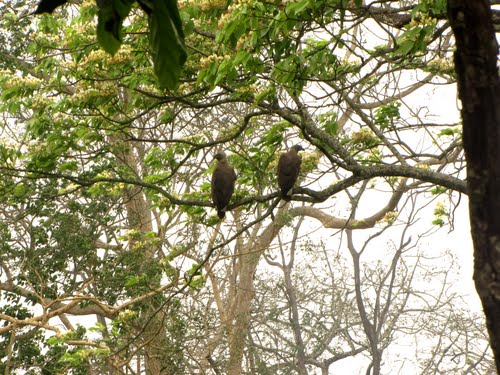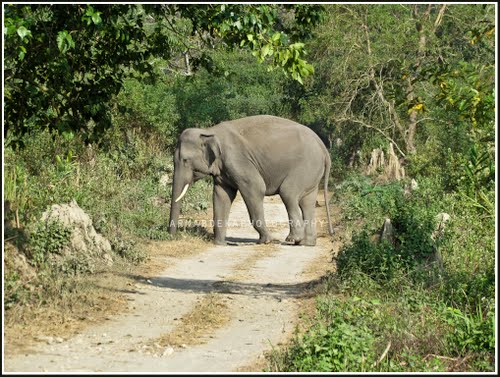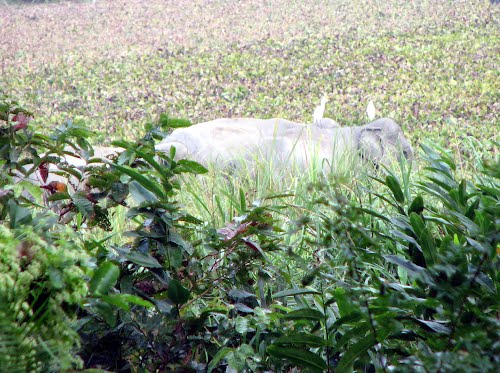Kaziranga National Park is a national park in the Golaghat and Nagaon districts of the state of Assam, India. The sanctuary, which hosts two-thirds of the world's great one-horned rhinoceroses is a World Heritage Site. According to the census held in March 2015, which was jointly conducted by the Forest Department of the Government of Assam and some recognized wildlife NGOs, the rhino population in Kaziranga National Park is 2,401. It comprises 1,651 adult rhinos, 294 sub-adults, 251 juveniles and 205 cubs. Kaziranga is home to the highest density of tigers among protected areas in the world, and was declared a Tiger Reserve in 2006. The park is home to large breeding populations of elephants, wild water buffalo, and swamp deer. Kaziranga is recognized as an Important Bird Area by BirdLife International for conservation of avifaunal species. When compared with other protected areas in India, Kaziranga has achieved notable success in wildlife conservation. Located on the edge of the Eastern Himalaya biodiversity hotspot, the park combines high species diversity and visibility.
Kaziranga is a vast expanse of tall elephant grass, marshland, and dense tropical moist broadleaf forests, crisscrossed by four major rivers, including the Brahmaputra, and the park includes numerous small bodies of water. Kaziranga has been the theme of several books, songs, and documentaries. The park celebrated its centennial in 2005 after its establishment in 1905 as a reserve forest.
History
The history of Kaziranga as a protected area can be traced back to 1904, when Mary Curzon, Baroness Curzon of Kedleston, the wife of the Viceroy of India, Lord Curzon of Kedleston, visited the area. After failing to see a single rhinoceros, for which the area was renowned, she persuaded her husband to take urgent measures to protect the dwindling species which he did by initiating planning for their protection. On 1 June 1905, the Kaziranga Proposed Reserve Forest was created with an area of 232 km².
Over the next three years, the park area was extended by 152 km², to the banks of the Brahmaputra River. In 1908, Kaziranga was designated a "Reserve Forest". In 1916, it was redesignated the "Kaziranga Game Sanctuary" and remained so till 1938, when hunting was prohibited and visitors were permitted to enter the park.
The Kaziranga Game Sanctuary was renamed the "Kaziranga Wildlife Sanctuary" in 1950 by P. D. Stracey, the forest conservationist, in order to rid the name of hunting connotations. In 1954, the government of Assam passed the Assam (Rhinoceros) Bill, which imposed heavy penalties for rhinoceros poaching. Fourteen years later, in 1968, the state government passed the Assam National Park Act of 1968, declaring Kaziranga a designated national park. The 430 km² park was given official status by the central government on 11 February 1974. In 1985, Kaziranga was declared a World Heritage Site by UNESCO for its unique natural environment.
Kaziranga has been the target of several natural and man-made calamities in recent decades. Floods caused by the overflow of the river Brahmaputra, leading to significant losses of animal life. Encroachment by people along the periphery has also led to a diminished forest cover and a loss of habitat. An ongoing separatist movement in Assam led by the United Liberation Front of Asom (ULFA) has crippled the economy of the region, but Kaziranga has remained unaffected by the movement; indeed, instances of rebels from the United Liberation Front of Assam protecting the animals and, in extreme cases, killing poachers, have been reported since the 1980s.







